Task X. Look at the following pictures. Here you can see different objects of the Russian domestic life. Find the non-equivalent realia among them?
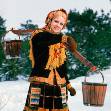

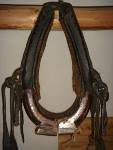


коромыслокочергасбруя электричка береза


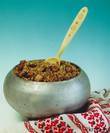
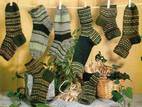
баня печь каша и чугунок шерстяные носки
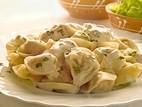

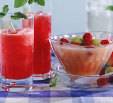
пельменигармоньморс
Task XI. Read the following paragraph about Russian traditional food, written by an American journalist. Decide if the idea of foreigners about Russian dishes differs from that of ours?
Russian Traditional Food
You’ve may have heard something about Russian traditional foods but have had little opportunity to try it. Visitors to Russia are often surprised at the variety and flavor of Russian traditional foods. A great many can be described as “divine,” and they will have you searching for the recipes when you return home!
So what are some of the most common traditional foods on a traditional Russian restaurant’s menu? Borshch, of course, is beet soup, and one of the most famous Russian traditional foods. Beets seem a strange base for soup to many Westerners, but there are plenty of reasons that this hearty soup is one of Russia’s most famous dishes. Full of vegetables and meat, the layered flavors in this soup are especially nice with a dollop of fresh sour cream.
You may have already heard of pirozhki. These little pastries can be packed full of potatoes, meat, cabbage, or cheese.
Caviar, or ikra is really something to get worked up about in Russia. Briny and sharp, it is often served on dark, crusty bread or with blini, which are like pancakes or crepes.
Blini are also served rolled with a variety of fillings: jam, cheese, onions, or even chocolate syrup. At any restaurant where you aren’t sure of any of the other dishes, blini are always a safe bet.
Russian kebabs are called shashlyk. Like any kebab, they can be a combination of meat and vegetables.
Pelmeni are pastry dumplings filled typically with meatballs. They can be served alone, slathered in butter and topped with sour cream, or in a soup broth. Definitely a favorite in Russia and abroad!
You can expect to find sour cream, or slivki, accompanying almost any Russian traditional food—with crepes, in soups, and even sometimes in dessert. Often, this sour cream is fresh and often melts into any warm dish, adding to its distinctive flavor.
Russians love ice cream, called morozhenoe. It is common to find it on many restaurant menus with a variety of topping to choose from—like fruit, nuts, or chocolate.
Task XII. Read the following text about clothes in old Russia. Find the non-equivalent and connotative lexis. Address to some culture-literacy English dictionaries and find there the equivalents for the abovementioned items (use the sources of information in the end of the given study-book).
Clothes in Old Russia
Clothes can tell us about the people who wear them: about their class, their rank, their job, their country. Now one can see traditional Russian costumes in museums or during Russian village holidays.
Costumes were worn during important holidays: during Easter, during the Trinity day festivities and during weddings. Sewn over hundred years ago, the costumes have been kept as family heirlooms by a number of generations of villagers. The costume showed the differentiation between people of different social positions. Their costumes reveal their conception of the world and their way of life. The Russian costume is richly decorated and specific cloth and colors were used. Each region had its own kind of costume.
The men's costumes include: a shirt with a slanted cut to the collar (called “kosovorotka”), narrow pants, belts, hats and boots. The women's costume include: a long-sleeved shirt, a sarafan, a short jacket (called "dushegreyka"), a kokoshnik (head-dress) and short boots. These costumes reveal their conception of the world and the beauty of morals. The costumes reflect the villagers' own taste in ornamentation, favorite colors, and particular way of wearing specific articles. There is a typical old Russian conception of beauty. The ideal of a beautiful woman was considered to be a tall, strong and stately woman with red cheeks, blue eyes and blonde hair.
Wearing the village's costume, a woman reveals the social status and her age. Young married women wore mainly clothes with bright colors, and their costumes were adorned with a great number of beads, buttons and necklaces. Old women wore black, white and brown colors.
Married women wore the scarf in such a way that completely covered the hair. People believed that a woman with uncovered hair can bring misfortune to her family. The young, unmarried women wore their scarves in such a way as to reveal the hair and braid. But every social class wore specific clothes. Rich people tried to show their wealth and prosperity through their clothes.
Russian Clothes Vocabulary
Kokoshnik - woman's head-dress in old Russia;
Shuba - a fur coat;
Sarafan - a long woman's dress covering feet and having the form of a high skirt with straps or sleeveless chemise worn over one with sleeves;
Sermyaga - a kind of rough woolen cloth used for peasant clothing;
Kosovorotka - a shirt with a narrow stand up collar and an off-center slit or button closure shifted to the left or the right
Onuchi - long narrow strips of cloth (up to two meters in length) over which lapti (bastshows) were worn;
Ponyova - a kind of skirt made of three lengths of cloth and ornamented with embroidery, lace, spangles and beads;
Perednik - an apron that served to keep the clothes clean; on holidays it was used as a decoration;
Valenki - felt boots;
Kaftan – garment;
Tulup – sheepskin.
